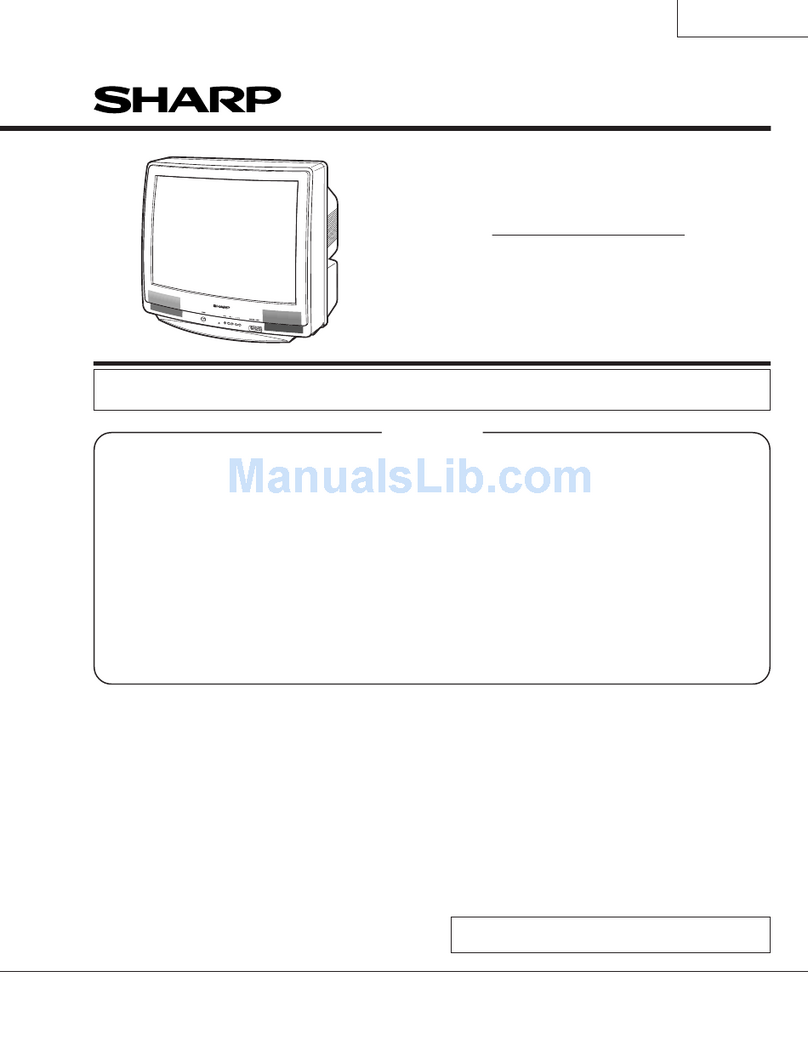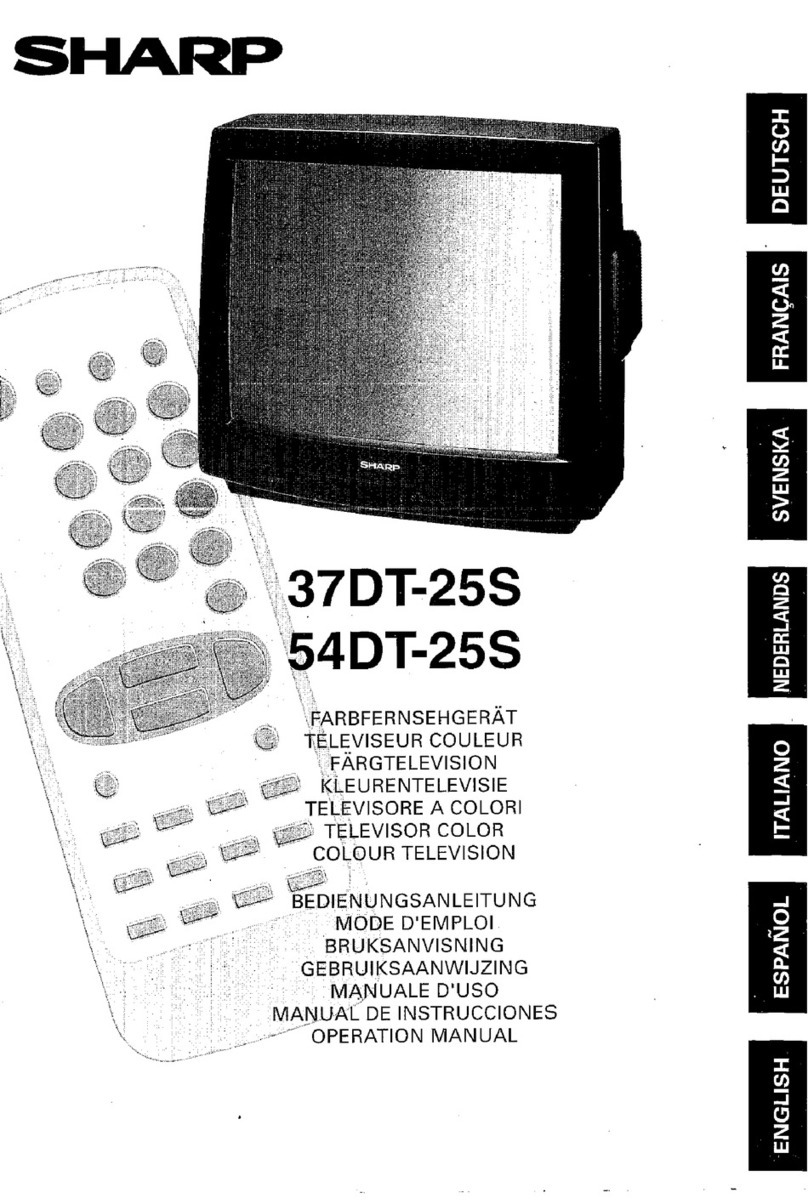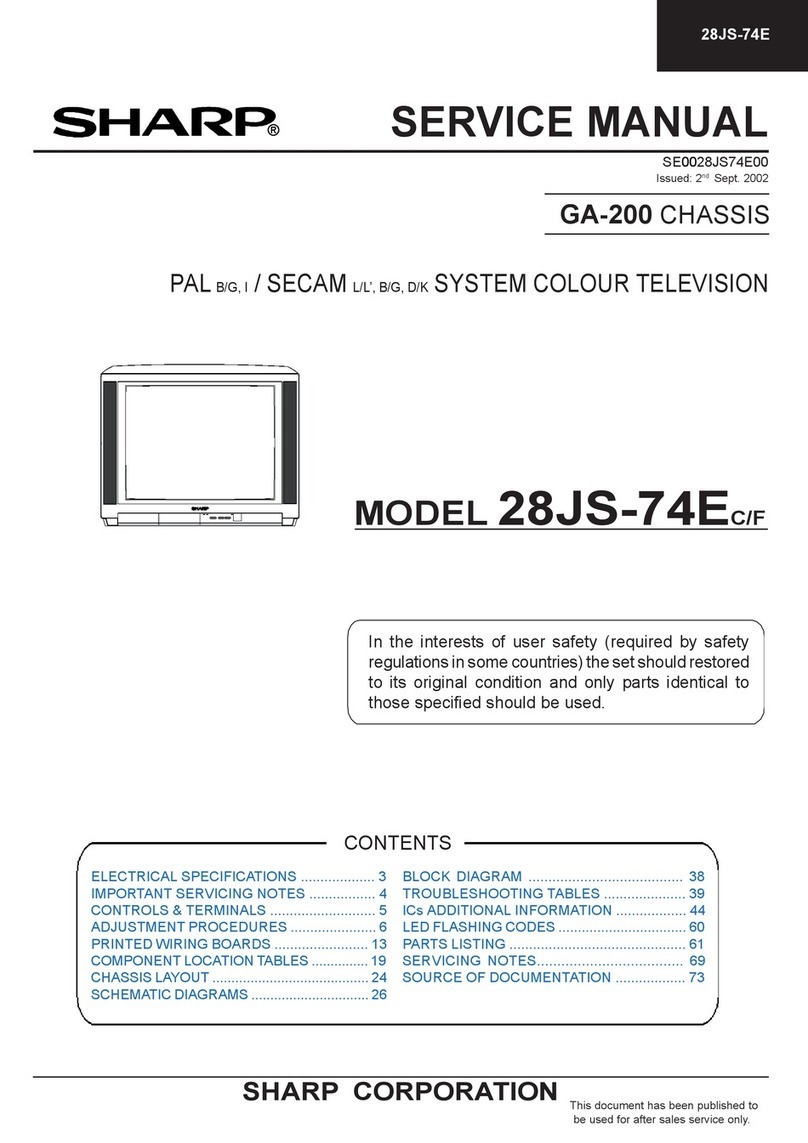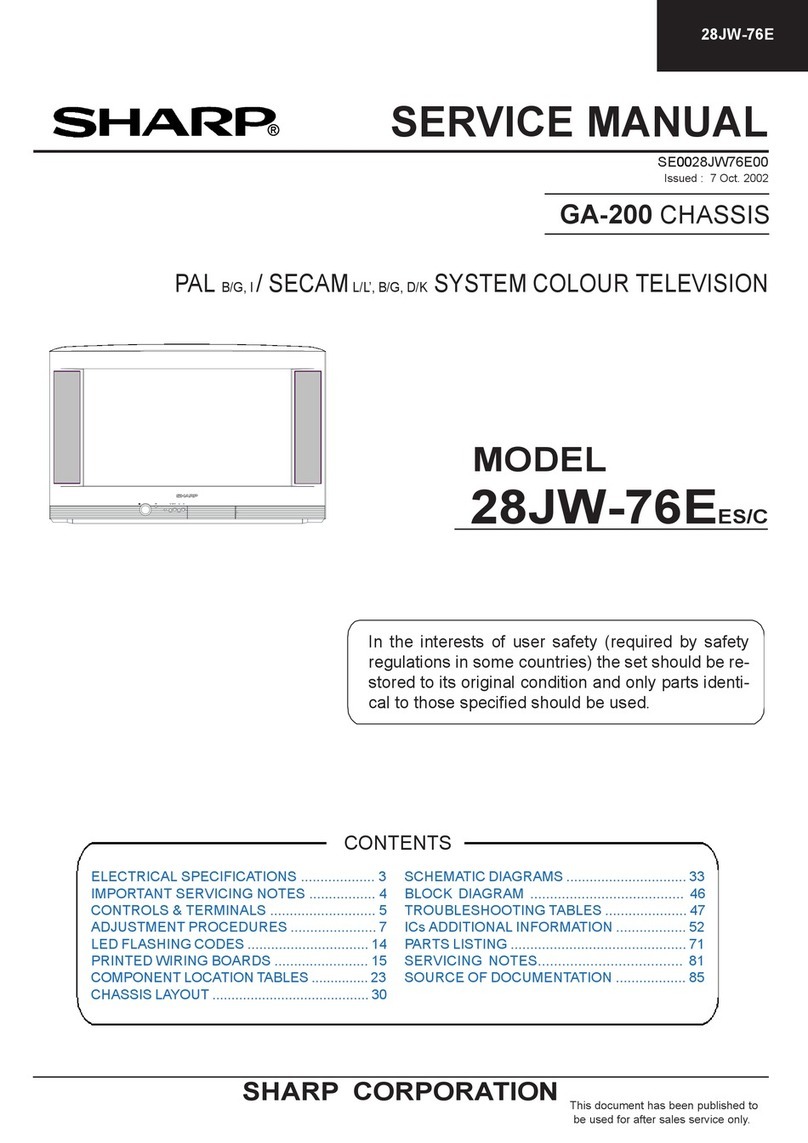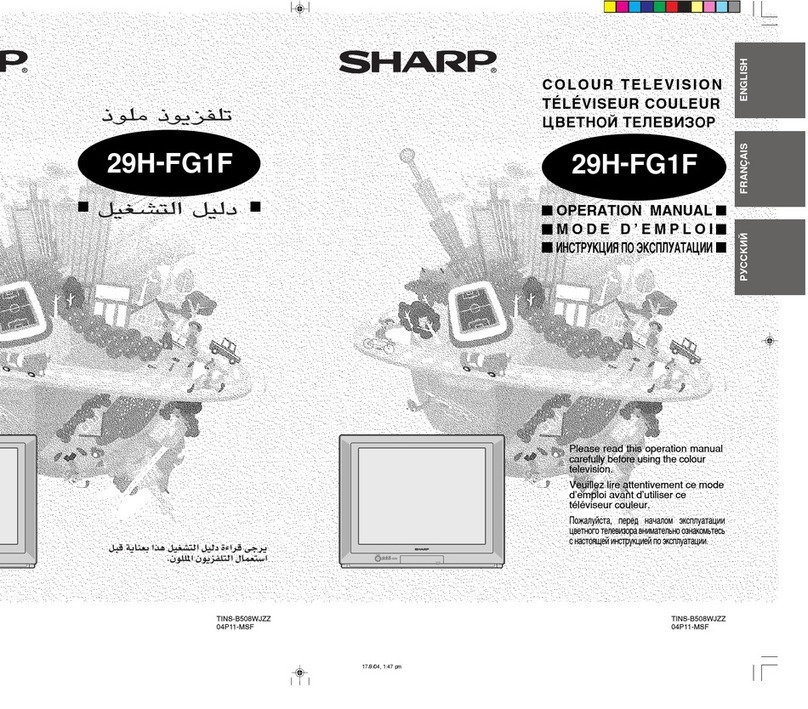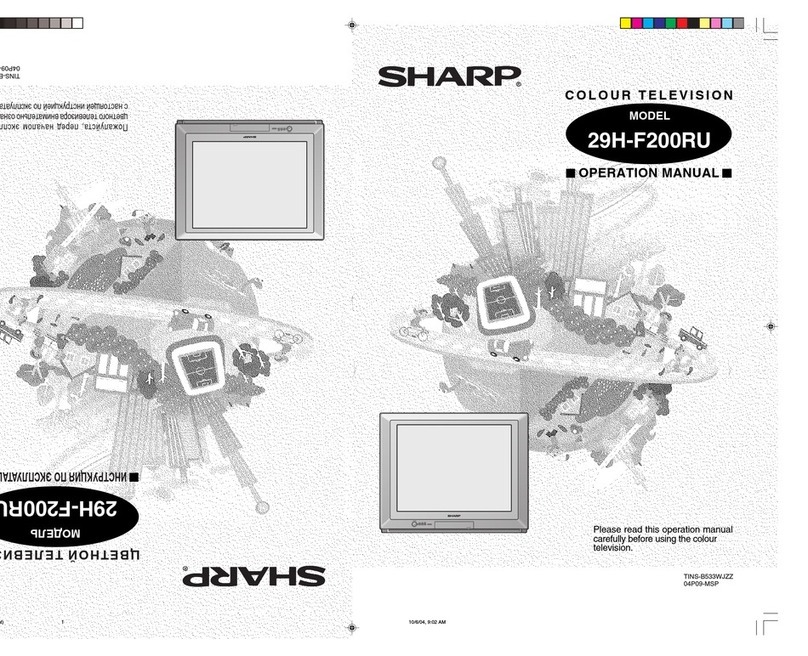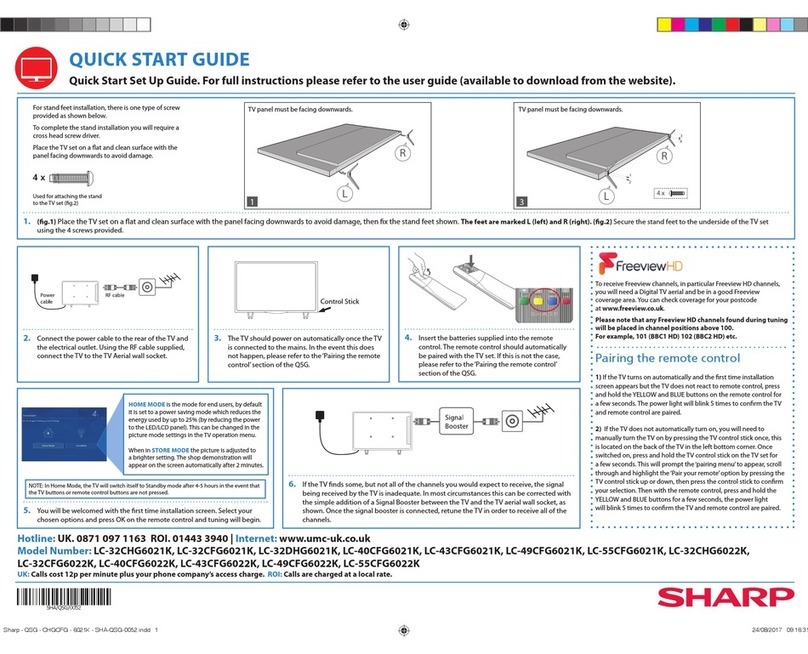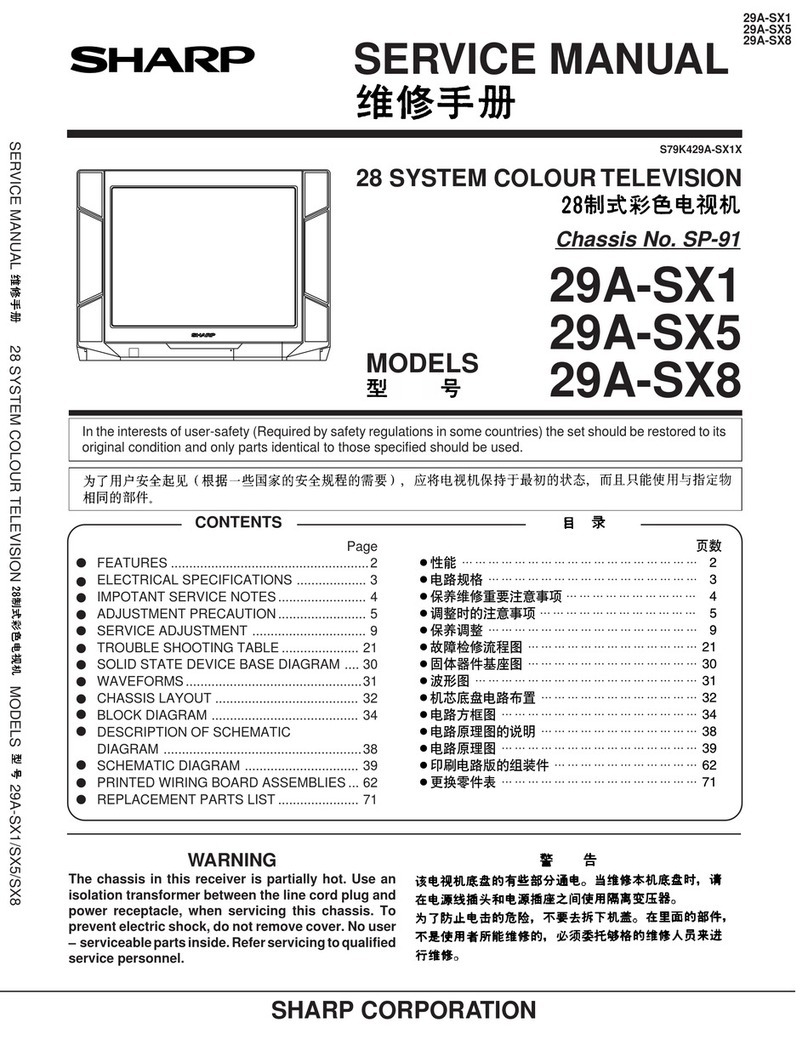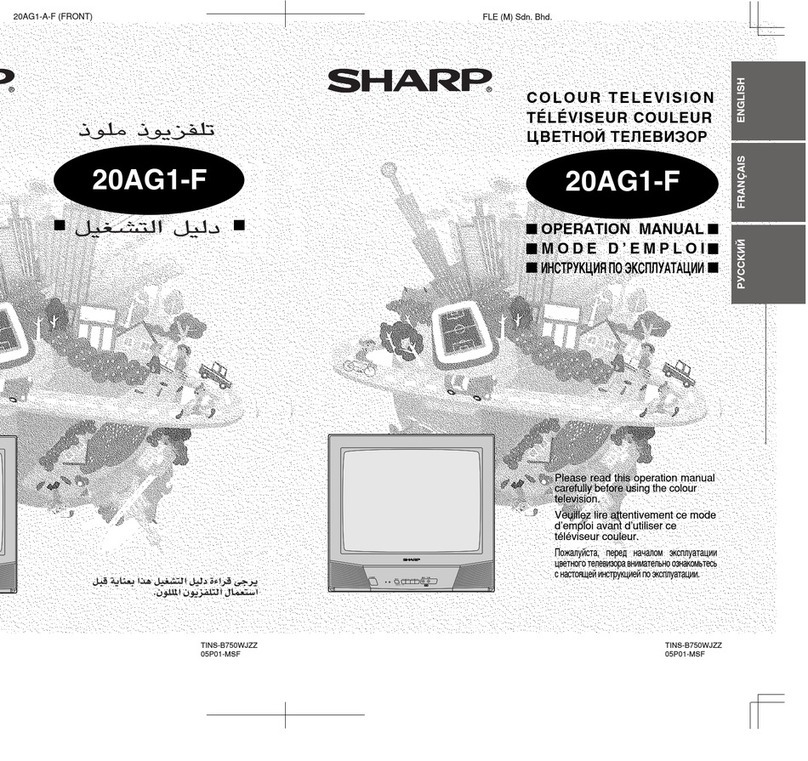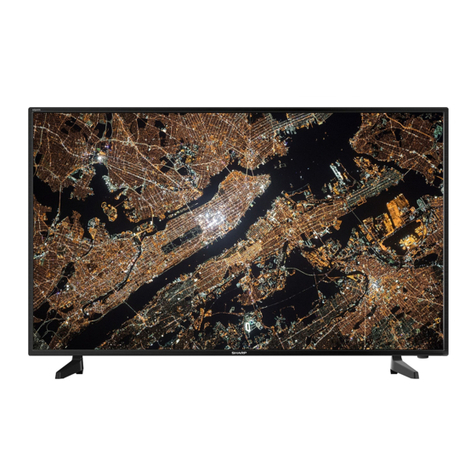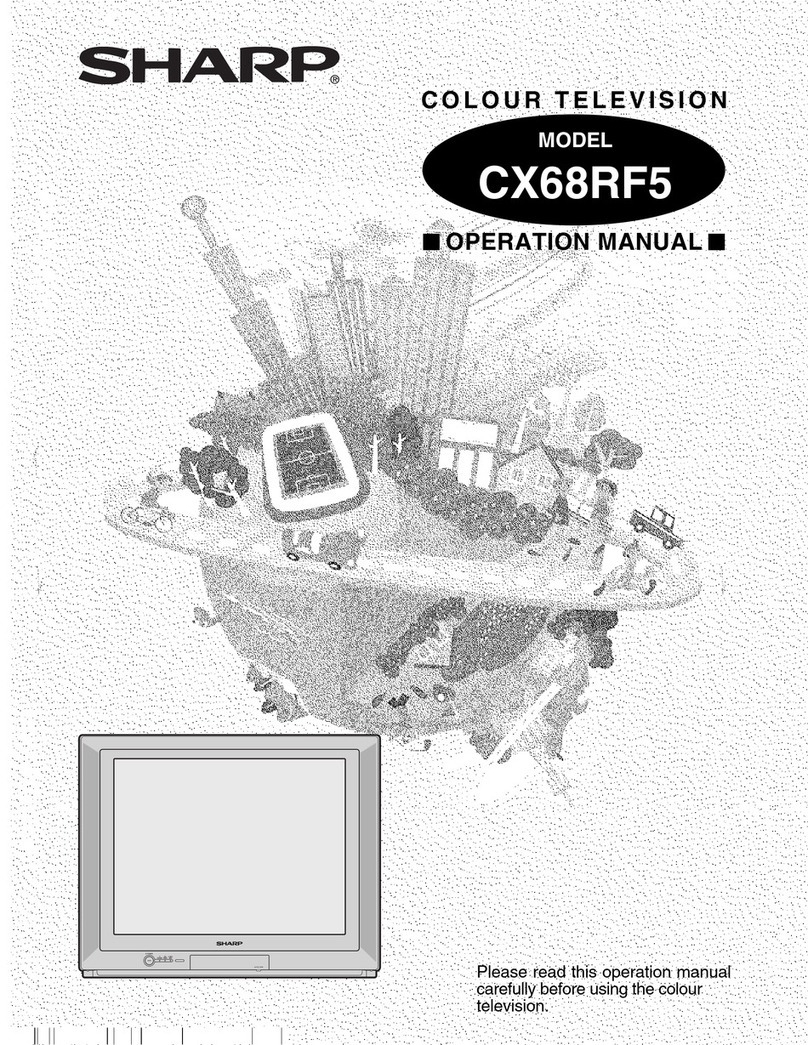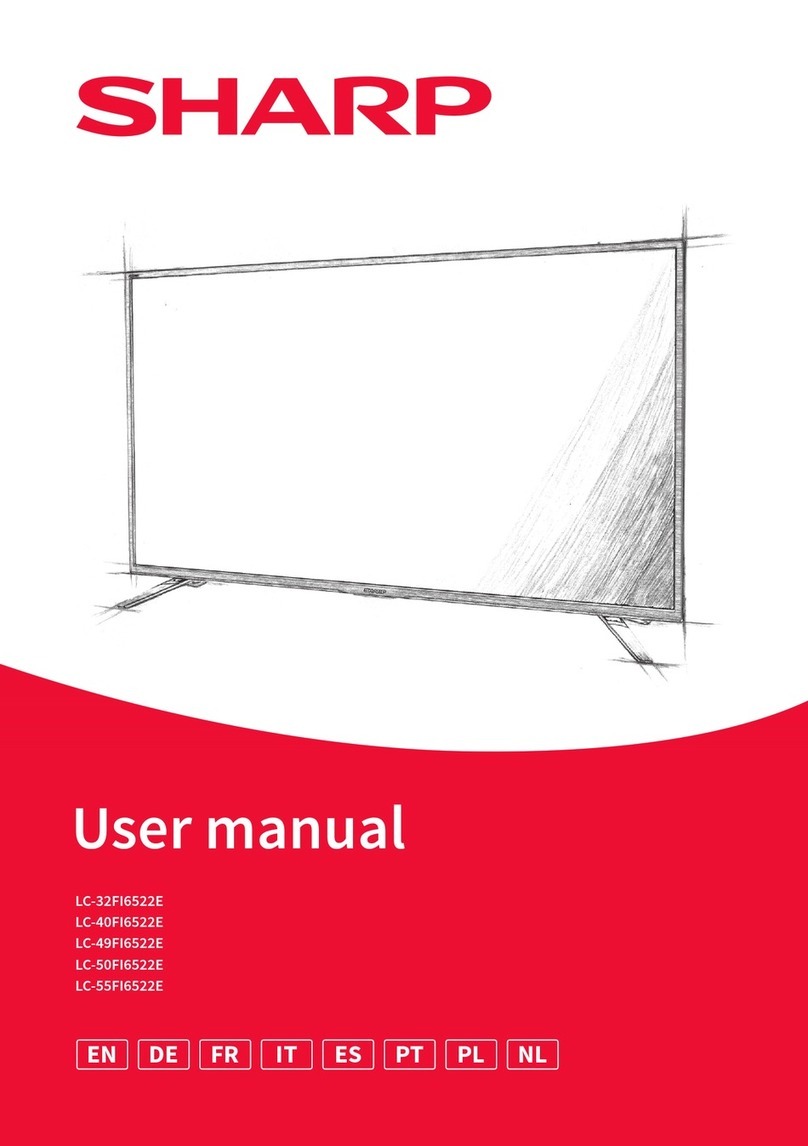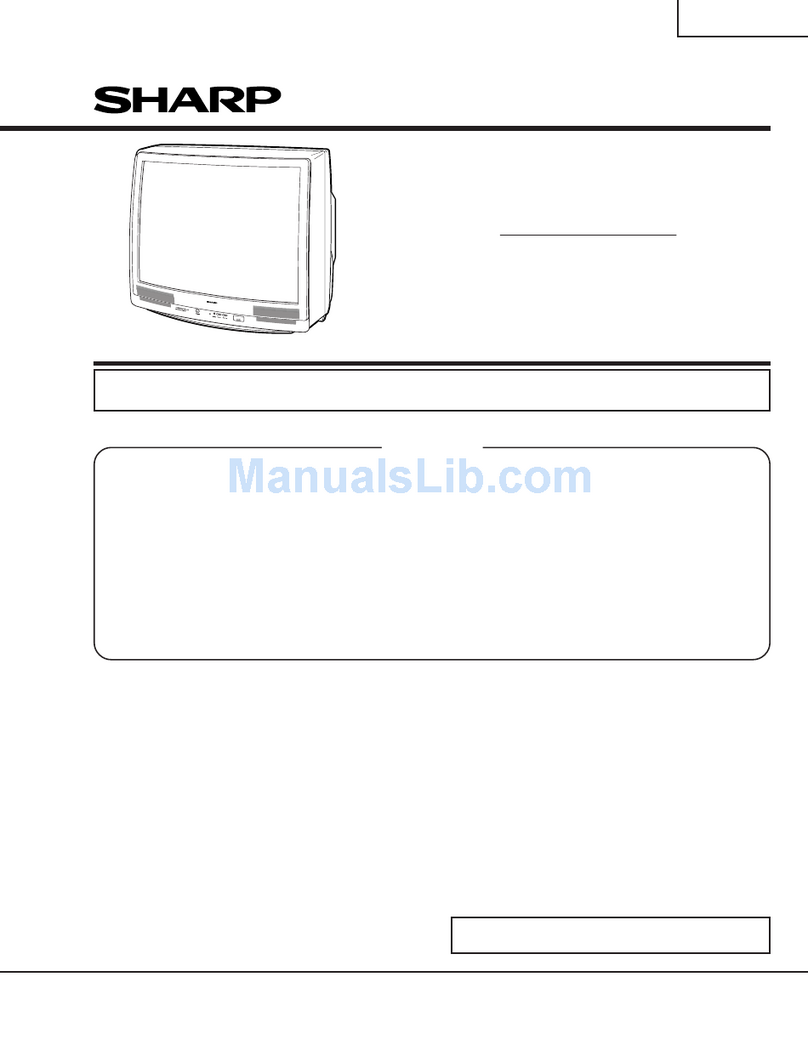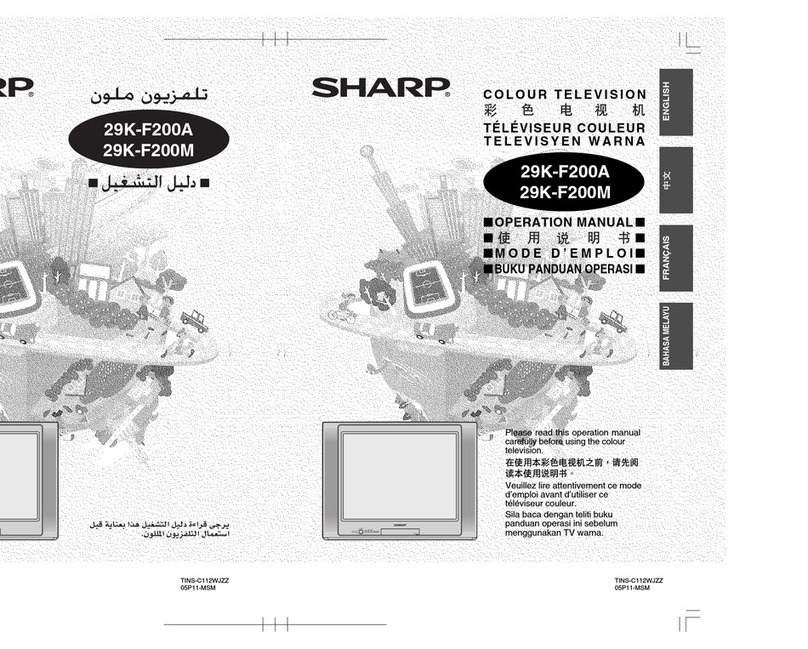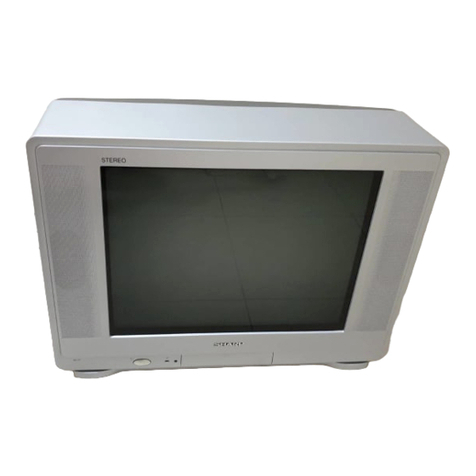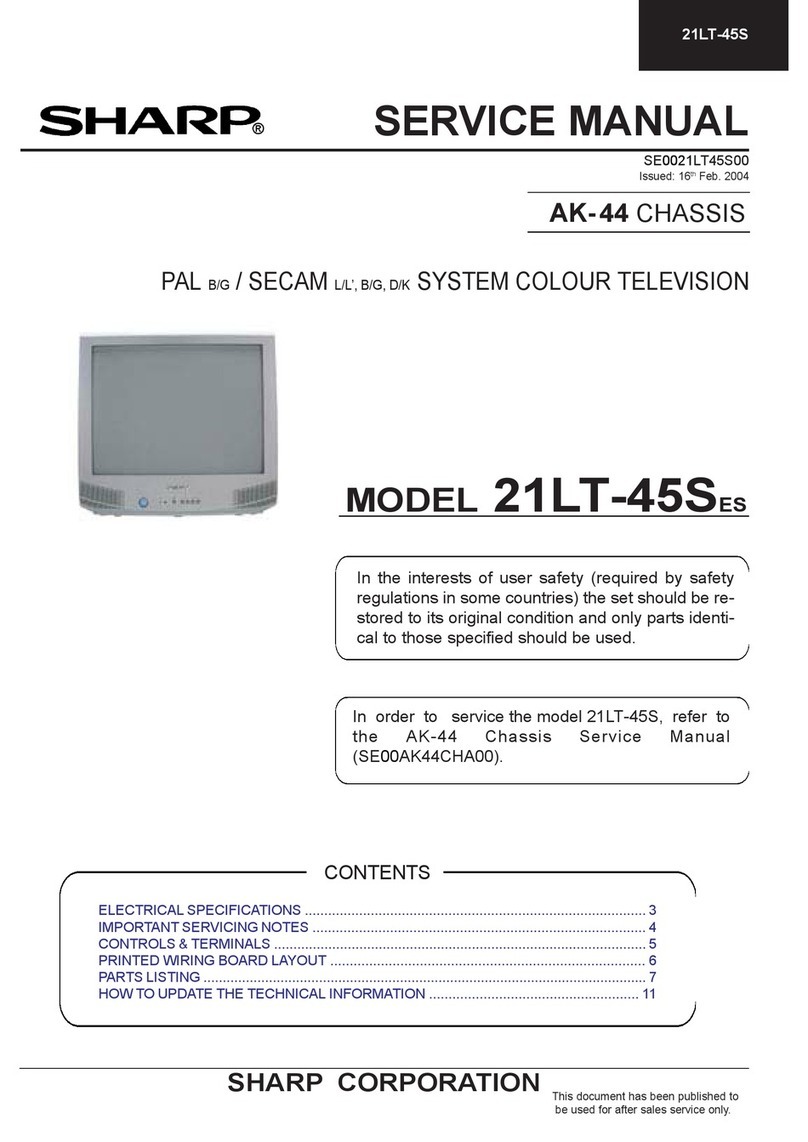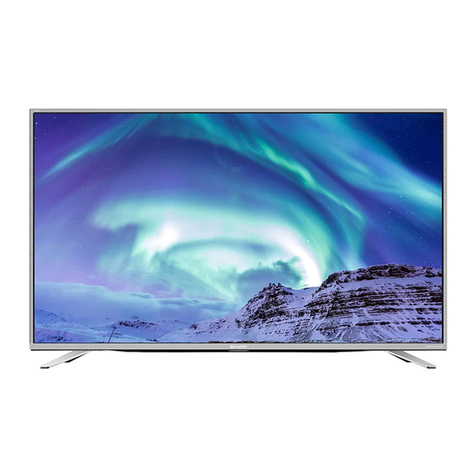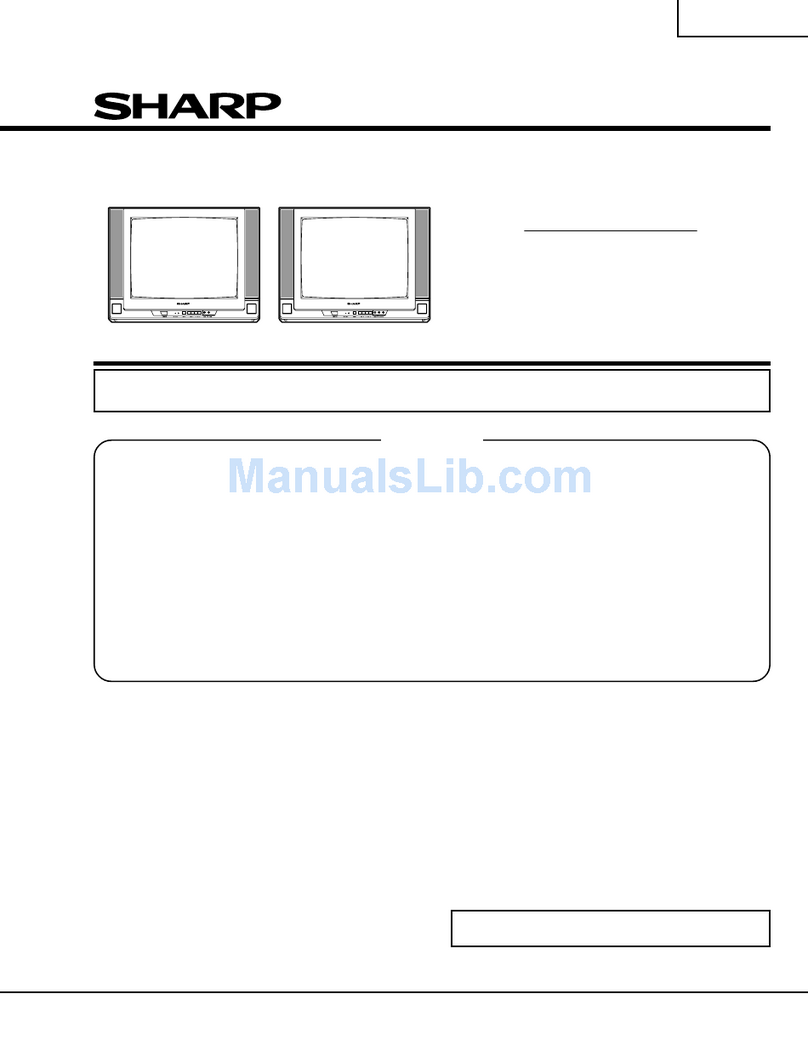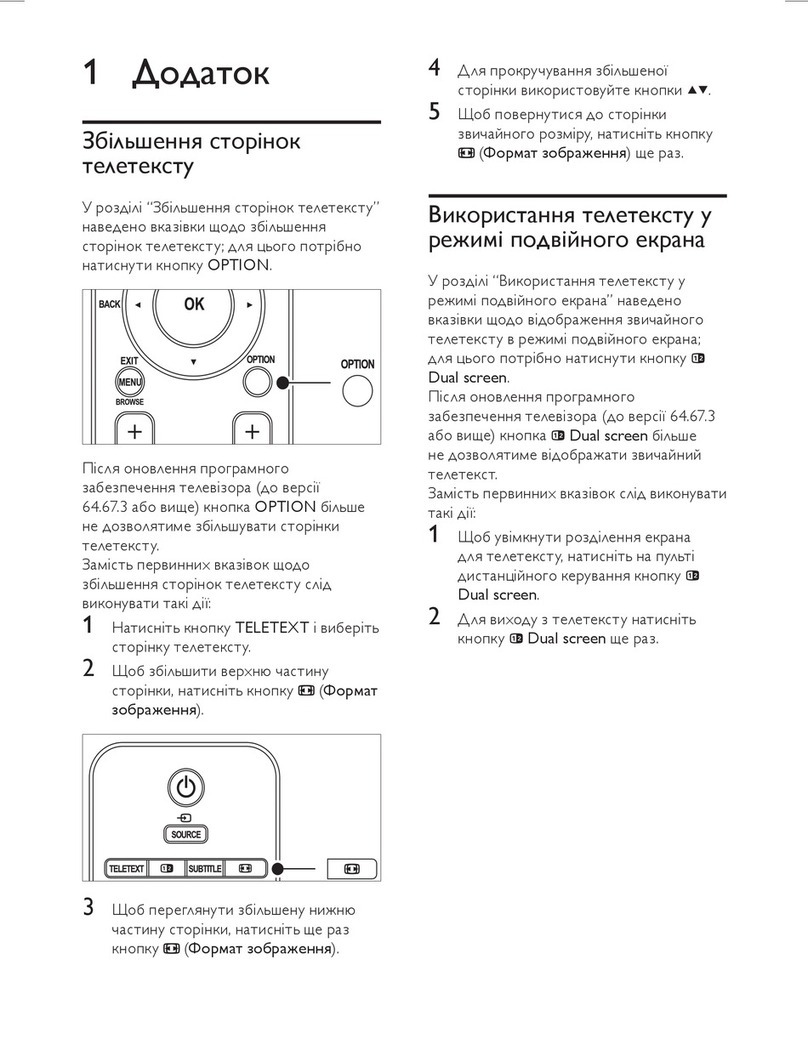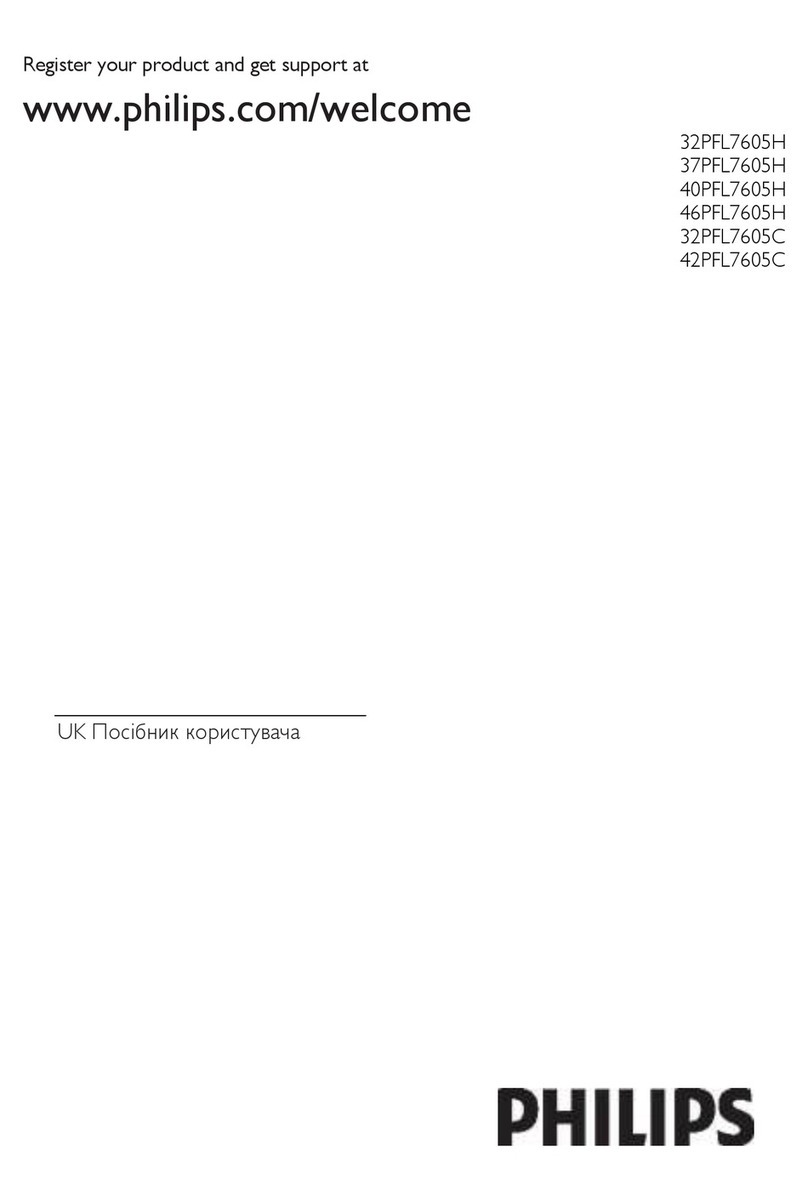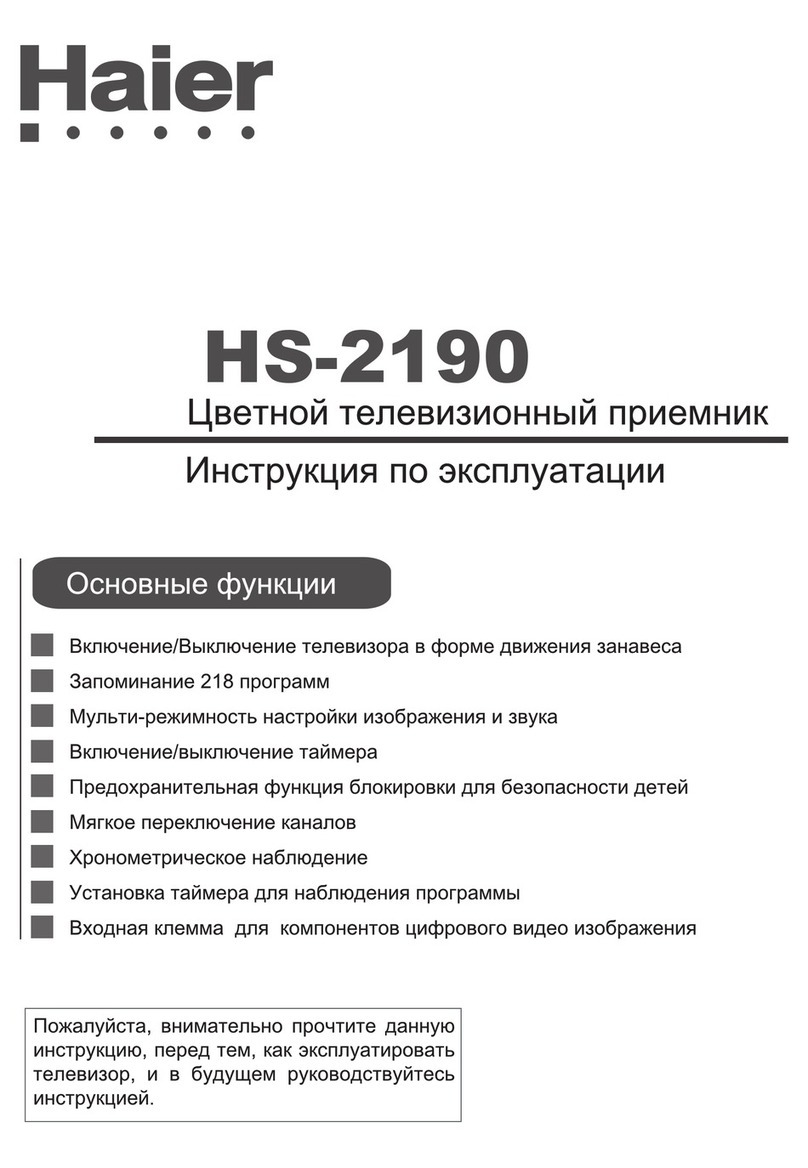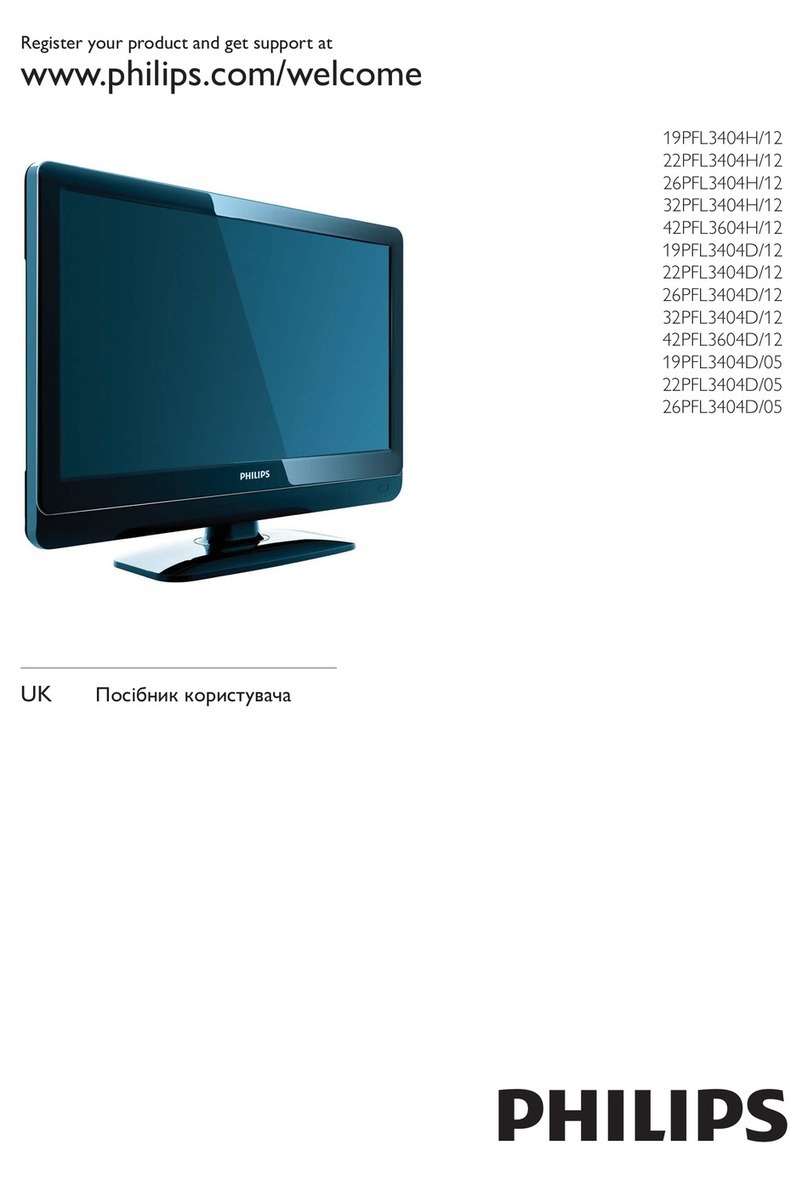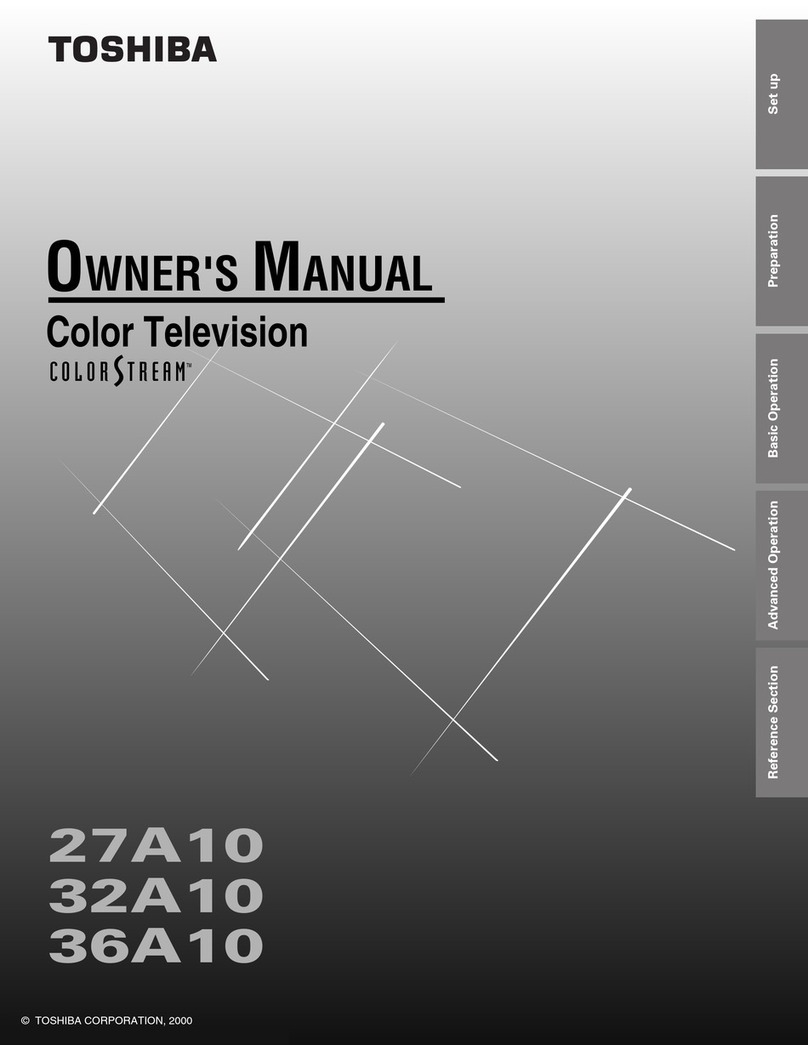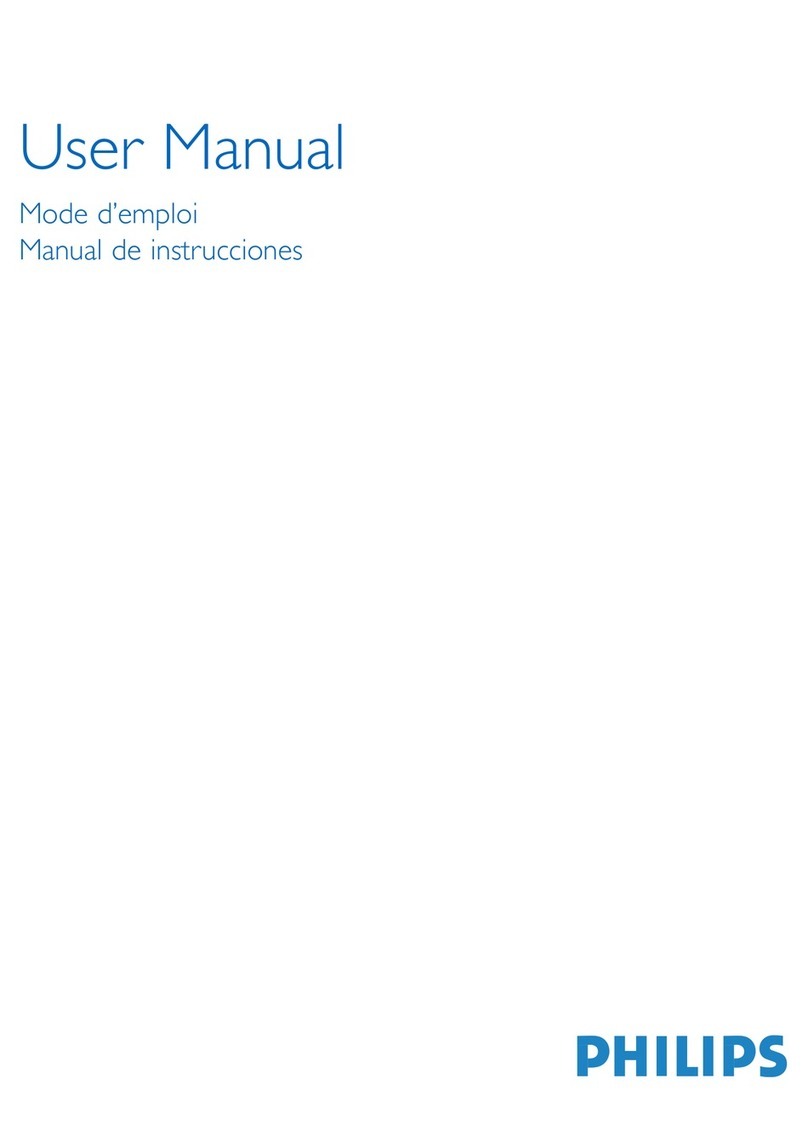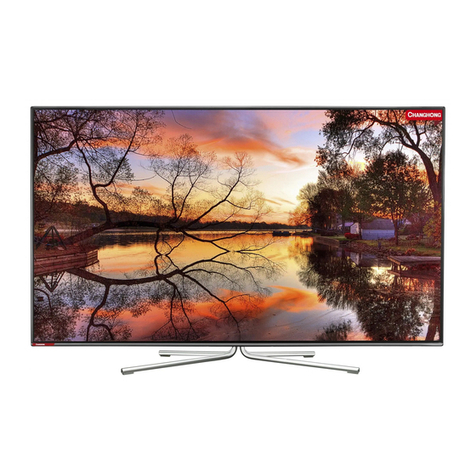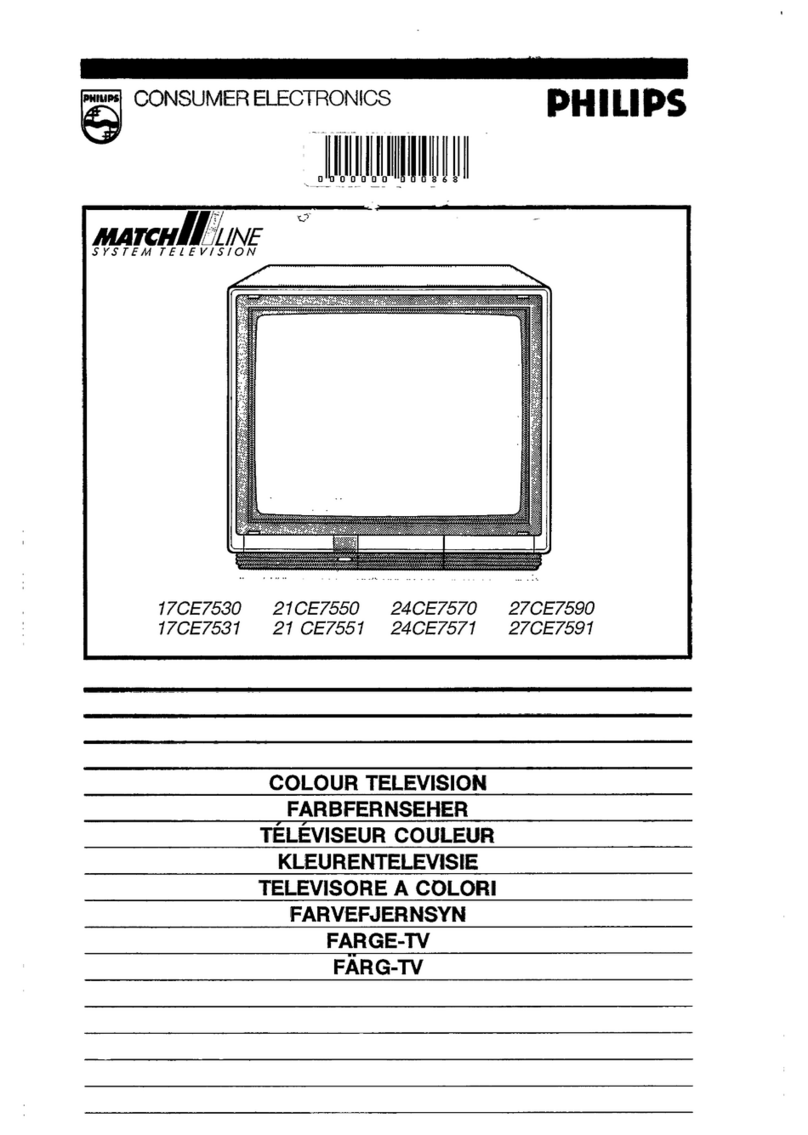
4
32L-S500,32L-X2000
CL32S50,36L-X2000
PRECAUTIONS A PRENDRE LORS DE LA REPARATION
ËNe peut effectuer la réparation qu' un technicien spécialisé qui s'est parfaitement
accoutumé à toute vérification de sécurité et aux conseils suivants.
AVERTISSEMENT
1. N'entreprendre aucune modification de tout circuit.
C'est dangereux.
2. Débrancher le récepteur avant toute réparation.
3. Les déversoirs thermiques à semi-conducteurs
peuvent présenter un danger de choc électrique
lorsque le réceqteur est en marche.
4. Le châssis de ce récepteur possède deux systèmes
de masse qui sont séparées par du matériel
d'isolation. Le système de masse non-isolée (sous
tension) est pour le circuit du régulateur de tension
B+ et le circuit de sortie horizontale. Le système de
masse isolée est pour les tensions DC B+ basses et
lecircuitsecondaire du transformateur haute tension.
Pour éviter tout risque d'électrocution lors de
l'entretien de ce châssis, utiliser un transformateur
d'isolation entre le cordon de ligne et la prise de
courant.
5A 125V
PRECAUTION: POUR LA
PROTECTION CONTINUE
CONTRE LES RISQUES
D'INCENDIE, REMPLACER LE
FUSIBLE PAR UN FUSIBLE DE
MEME TYPE 5A-125V.
REPARATION DU SYSTEMEA HAUTE TEN-
SION ET DU TUBE-IMAGE
Lors de la réparation de ce systéme,
supprimer la charge statique en branchant
une résistance de 10 kΩen série avec un fil
isolé (comme une sonde d'essai) entre la
mise à la terre du tube-image et le fil
d'anodel. (Le corden d'alimentation doit être
retiré de la prise murale.)
1. Le tube image dans ce récepteur emploie une
protection intégrée contre l'implosion.
2. Par mesure de sécurité, changer le tube-image pour
un tube du même numéro de type.
3. Ne pas lever le tube-image par son col.
4. Nemanipulerle tube-image qu'en porant des lunettes
incassables et qu'après avoir déchargé totalement
la haute tension.
LIMITES DES RADIATIONS X ET DE LA
HAUTE TENSION
1. Tout le personnel réparateur doit être instruit des
instructions et procédés relatifs aux radiations X.
Le tube-image, seule source de rayons X dons les
téleviseurs transistorisés, n'émet pourtant pas de
rayonsmesurables si lahautetension est maintenue
à un niveau préconisé dans la section "Vérification
de la haute tension".
C'estseulementquandlahautetensionestexcessive
que les rayons X peuvent entrer dans l'enveloppe du
tube-image y compris le conducteur de verre. Il est
important de maintenir la haute tension en-dessous
du niveau spécifié.
2. Il est essentiel que le réparateur ait sous la main un
voltmètreàhautetensionquidoitêtrepériodiquement
étalonné.
3. La haute tension doit toujours être maintenue à la
valeur de régime -et pas plus haute. L'opération à
des tensions plus élevées peut entraîner une panne
du tube-image ou du circuit à haute tension et, dans
certaines conditions, peut entraîner une radiation
dépassant les niveaux préscrits.
4. Quand le régulateur à haute tension fonctionne
correctement, il n'y a aucun problème de radiation
X. Chaque fois qu'un châssis couleurs est réparé, la
luminosité doit être examinée bout en contrôlant la
haute tension à l'aide d'un voltmètre pour s'assurer
que la haute tension ne dépasse pas la valeur
spécifiée et qu'elle soit correctement réglée.
5. Nepas utiliser untube-imageautreque celui spécifié
et ne pas effectuer de modifications déconseillées
du circuit à haute tension.
6. Lors de la recherche des pannes et des mesures
d'essai sur un récepteur qui présente une haute
tension excessive, éviter de s'approcher inutilement
du récepteur.
Ne pas faire fonctionner le récepteur plus longtemps
que nécessaire pour localiser la cause de la tension
excessive.
